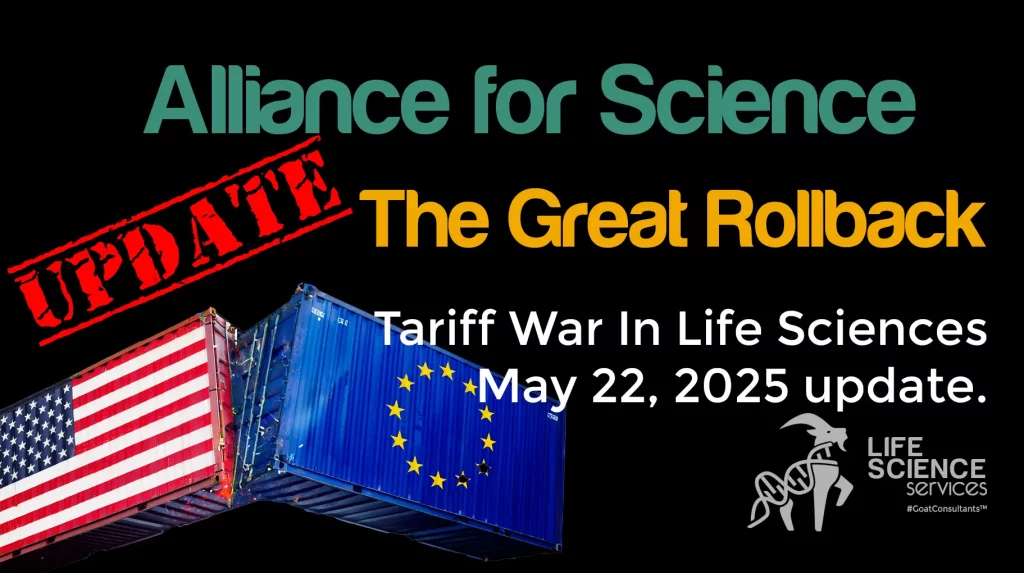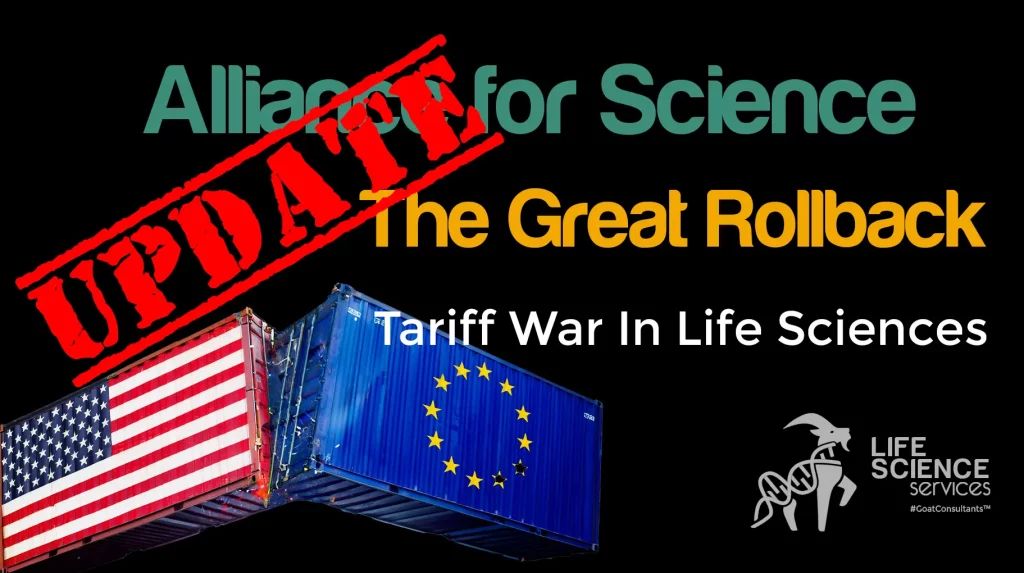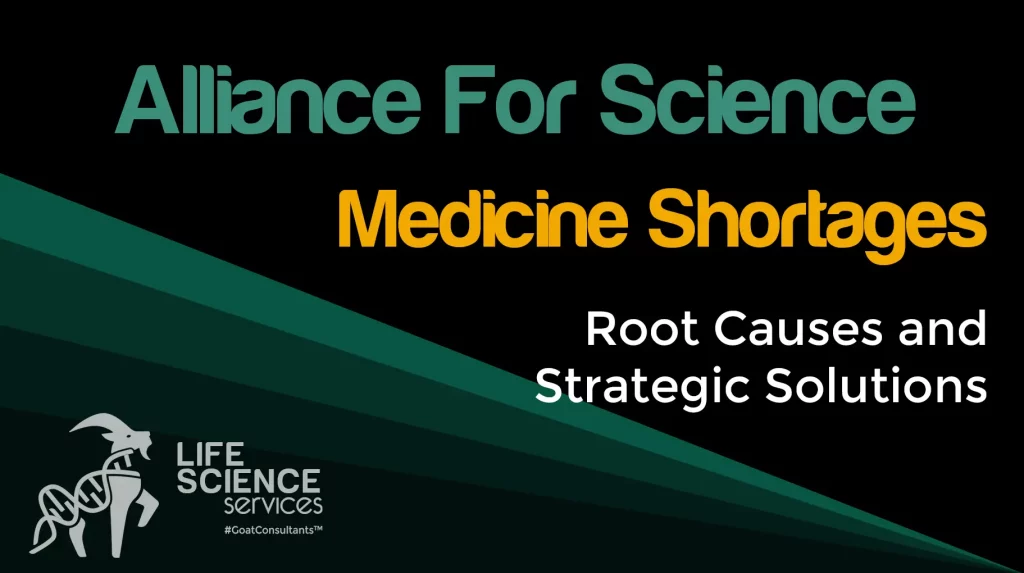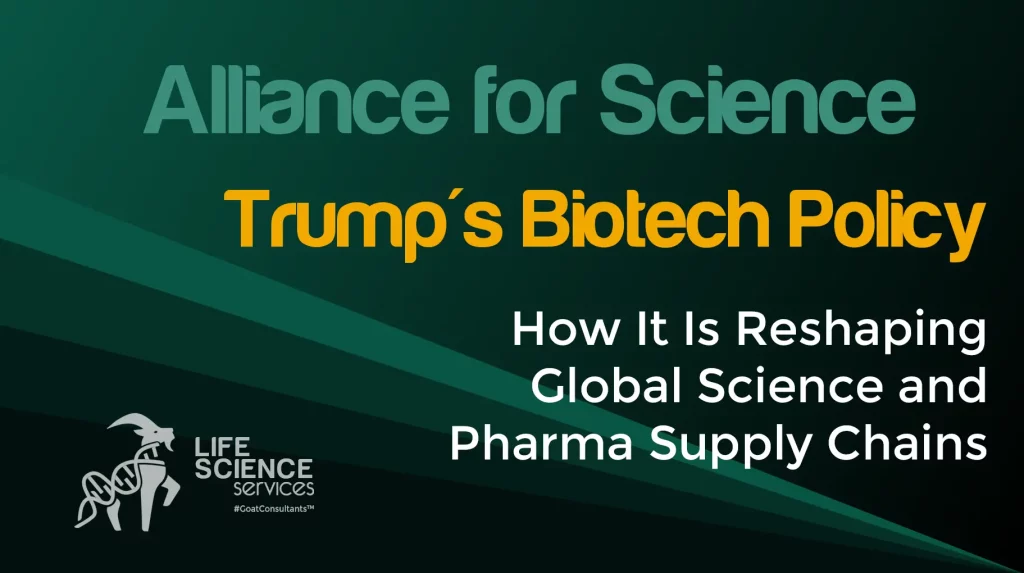
Trump’s Biotech Policy Is Reshaping Global Science and Pharma Supply Chains

Disruption at the Crossroads of Science and Policy
The intersection of politics and science has rarely been as pronounced, or as volatile, as it is today under the influence of Trump’s biotech policy. From sharp turns in trade strategy to radical overhauls of drug pricing frameworks, the United States is rewriting the rules that govern one of the world’s most complex and globally integrated industries: biotechnology and pharmaceuticals.
“Trump’s biotech policy has turned science into a strategic battleground.“
What began as a mission to reduce drug costs and bring manufacturing back home has evolved into a multifaceted policy campaign that threatens to upend long-standing supply chains, research ecosystems, and international cooperation in life sciences. Through executive orders, threats of tariffs, and enforcement directives, Trump’s biotech policy is reshaping global science that has set in motion a cascade of uncertainty across the global life sciences community.
Executives in small and mid-tier biotech and pharma companies navigating this new terrain, the implications are profound. Domestic strategies are being reshaped under the pressure of economic nationalism. International partnerships are in flux. And the core value proposition of U.S. biotech innovation is facing systemic risk.
This article offers an in-depth exploration of the policies, tensions, and consequences driving this transformation. It examines how these policies affect U.S. and European companies, what stakeholders are saying, and what leaders must consider in the face of escalating global trade tension and decentralization.
Whether you’re a CEO recalibrating your supply chain strategy or a COO analyzing risk exposure, understanding Trump’s biotech policy isn’t just smart; it’s imperative.
Trump Administration Actions
Biotech as a Bargaining Chip: A New Era of Economic Nationalism
From the outset, Trump’s biotech policy has centered on aggressive economic nationalism, reimagining pharmaceutical strategy not just as a public health issue, but as a high-stakes trade and security priority. The Trump administration’s actions in the life sciences sector span a wide spectrum, from price equalization strategies to manufacturing mandates, positioning biotech at the center of America’s trade agenda.
“The White House is wielding pharmaceutical policy as a tool of economic nationalism.“
At the heart of this effort lies a sweeping attempt to realign the economics of drug production and pricing. President Trump’s core narrative is that the United States, with its high drug prices, has long subsidized healthcare systems in foreign countries. In response, his administration introduced measures to “correct” this imbalance by demanding price cuts from pharmaceutical companies, threatening tariffs, and enforcing “Most Favored Nation” (MFN) pricing models to match U.S. prices to those of the lowest-paying developed nations.
Executive Actions Reshaping Industry Norms
Several of these actions were formalized through executive orders. One of the most controversial was the directive for the U.S. Department of Health and Human Services to implement international reference pricing for Medicare: it is a move intended to curb domestic costs but heavily criticized by industry groups. The order also authorized importing cheaper drugs from abroad and directed the Federal Trade Commission (FTC) to investigate anticompetitive practices within the pharma sector.
Additionally, the administration initiated a Section 232 probe into pharmaceutical imports: it is typically reserved for matters of national security. By doing so, it opened the door to classify drug dependency on foreign nations as a potential threat, creating a legal rationale for imposing tariffs on medical imports.
Policy Through Provocation: The Art of Pressure
Unlike prior administrations that approached healthcare pricing through negotiated policy, Trump’s method is distinctly transactional and coercive. Public statements warning of tariffs on pharmaceutical imports were strategically timed to create pressure on foreign governments and multinational firms. Behind closed doors, these threats were often used as negotiating tools. An approach insiders described as keeping the “gun on the table.”
Simultaneously, the administration called for reshoring pharmaceutical manufacturing to U.S. soil, coupling the moral imperative of “America First” with economic and national security arguments. Companies like Johnson & Johnson began onshoring processes in response, though many raised concerns about feasibility, cost, and timeline.
Fracturing the Global Framework
These aggressive maneuvers are not happening in a vacuum. They represent a departure from decades of liberalized trade policy and a challenge to the globally interconnected model of biotech innovation. By recasting pharmaceutical policy as a lever of national strength, the Trump administration has inserted a layer of geopolitical friction into an industry built on international cooperation.
For life sciences executives, this policy shift means reevaluating long-term plans around clinical trials, production sourcing, and global expansion. The rules are changing and the repercussions will be felt far beyond Washington.
The Tariff Threat
Tariffs as Leverage in Drug Pricing Warfare
Few policy tools generate as much uncertainty, and strategic tension, as tariffs. Under Trump’s biotech policy, tariffs have evolved into a central weapon in the administration’s battle over global drug pricing. Though rarely enacted outright, their threat has lingered over the pharmaceutical sector like a sword of Damocles, influencing market behavior, investment decisions, and international diplomacy.
“Even the threat of tariffs is enough to reshape biotech decision-making worldwide.”
Tariffs as a Bargaining Tool
Trump has repeatedly asserted that if U.S. drugmakers don’t lower domestic prices to match global standards, they will face tariffs. This rhetoric aligns with his broader trade philosophy: use tariffs as both punishment and leverage.
The Section 232 investigation into pharmaceutical imports gave the administration the legal grounds to consider tariffs based on national security, asserting that the U.S. relies too heavily on foreign manufacturers for active pharmaceutical ingredients (APIs) and finished drugs. Though finished pharmaceuticals were temporarily exempted from blanket tariffs, the administration’s tactical delay was strategic. Keeping the option open gave the U.S. a potent negotiation chip in future trade discussions.
Industry and International Response
The threat alone has shaken confidence. U.S. and European pharmaceutical firms warned that imposing tariffs would increase operational costs, disrupt supply chains, and create shortages of essential medicines. The Biotechnology Innovation Organization (BIO) estimated that a 25% tariff could inject over $50 billion in additional costs, including $15 billion specifically for inputs.
European officials, meanwhile, began contingency planning. Fearing U.S. tariffs would prompt a pivot of investment and production toward the American market, EU institutions opened dialogue with regional pharma executives to mitigate fallout. Some European countries even considered state support to maintain competitiveness.
Impact Beyond Pricing
Even without immediate implementation, the mere discussion of pharmaceutical tariffs has caused stock market volatility and operational hesitancy. Executives are being forced to build tariff contingency scenarios into their supply chain and investment models. For smaller biotech companies with less operational flexibility, the threat complicates everything from clinical trial sourcing to equipment procurement.
In the current global ecosystem, collaboration across borders is critical. Tariffs represent more than a financial cost. They inject instability into systems that thrive on predictability, threatening not just profitability but innovation itself.
Reshoring Pharma Production
National Security or Political Optics?
Reshoring pharmaceutical production is one of the Trump administration’s most publicized goals. It’s also one of its most complex. Promoted as a national security imperative, the initiative aims to reduce U.S. dependence on foreign drug manufacturing, especially from China and India. However, the path from policy proclamation to practical execution is fraught with challenges.
“Reshoring sounds simple. Until you consider the billions and the years it requires.”
Strategic Motives Behind Reshoring
At its core, the reshoring effort taps into the administration’s “America First” ideology. Trump and key advisors like Peter Navarro have long equated trade deficits with strategic vulnerability. From their perspective, producing critical medicines domestically enhances security, creates jobs, and reduces economic exposure during global crises like COVID-19.
The administration linked its reshoring goals to tariff threats, leveraging tax incentives and public pressure to push U.S. companies to reinvest in domestic production. High-profile manufacturers like Johnson & Johnson announced onshoring initiatives in response, and BIO reported over $500 billion in pledged investment, partially driven by the 2017 Tax Cuts and Jobs Act.
Practical and Financial Hurdles
Despite political momentum, reshoring remains a logistical minefield. New pharmaceutical facilities can take 5 to 10 years to become operational and cost up to $2 billion each. BIO cautions that reconfiguring supply chains is not only expensive but potentially disruptive to patient access and ongoing R&D.
Small and mid-sized biotech firms, in particular, lack the financial bandwidth for such capital-intensive projects. For them, mandates or expectations to shift production domestically could stall innovation or redirect vital resources away from research.
Unintended Consequences
Ironically, policy volatility in the U.S., including uncertainty at the FDA and aggressive executive actions, has driven some companies to consider moving early-stage clinical trials abroad. Some CEOs describe this shift as contradictory to the “America First” doctrine: forced out of the U.S. by policies meant to keep them in.
Reshoring may appeal politically, but without synchronized support (financial, regulatory, and logistical) it risks harming the very ecosystem it seeks to protect. For now, it’s a vision more aspirational than actionable.
FTC Enforcement and Executive Orders
Targeting Anticompetitive Practices and Import Substitution
A defining feature of Trump’s biotech policy is the use of executive power to target structural inefficiencies and high drug costs. The administration’s aggressive stance manifests most visibly through executive orders and an emboldened Federal Trade Commission (FTC).
“Executive orders and FTC crackdowns are rewriting the rules of market access and pricing.”
Reinventing Drug Pricing Models
Central to this initiative is the “Most Favored Nation” (MFN) pricing model, an executive order that directs drugmakers to match U.S. prices with those of the lowest-paying developed nations. The policy, championed by Trump as a cure for pharmaceutical price inflation, represents a fundamental shift in how drug pricing is regulated.
The MFN rule also lays the groundwork for direct-to-consumer imports and increased transparency in pharmaceutical contracts. Trump even floated potential restrictions on drug exports if pricing gaps weren’t addressed. These measures signal a more interventionist approach, where government influence extends deeper into pharmaceutical economics.
FTC Enforcement in Action
Complementing the MFN order is a directive for the FTC to clamp down on anticompetitive behavior. Trump accused drugmakers of manipulating market dynamics through exclusivity deals and delay tactics with generic manufacturers.
FTC officials responded by launching investigations and committing to more aggressive oversight. Although enforcement outcomes remain limited so far, the threat has added legal complexity to an already highly regulated sector.
Legal and Market Challenges
The pharmaceutical industry has challenged these actions both legally and rhetorically. Many believe the MFN model oversteps statutory limits and undermines innovation. Critics argue that importing foreign pricing structures into the U.S. ignores the reality of middlemen, rebates, and unique market conditions.
Despite pushback, these actions reflect a growing appetite for top-down control in an industry historically guided by market forces. For executives, understanding this regulatory trajectory is essential for navigating compliance, pricing strategy, and investment planning.
Industry Backlash
Disrupting Innovation: Why Industry Says ‘No’
The biotech and pharmaceutical industries have mounted a unified and vocal opposition to Trump’s biotech policy. Their message is clear: while the intentions may be noble, the methods risk crippling innovation, damaging supply chains, and harming patients.
“Innovation doesn’t survive uncertainty. Especially when it’s legislated.”
Threats to Research and Development
BIO and PhRMA have led the charge, warning that price controls and tariffs will jeopardize the industry’s ability to fund the next generation of therapies. BIO estimates that tariffs alone could slash R&D budgets by tens of billions, undermining progress in areas like rare diseases and personalized medicine.
Industry leaders contend that high U.S. prices are not arbitrary but reflect the enormous costs of innovation. These prices fund the clinical trials, regulatory reviews, and post-market studies required to bring new drugs to market. Critics warn that MFN pricing could devastate small and mid-sized firms who rely on future pricing margins to attract funding today.
Disruption of Supply Chains
Pharma’s global supply chain is built for efficiency, speed, and precision. It does not adapt easily to abrupt policy changes. Tariffs and reshoring initiatives introduce uncertainty that can delay production, raise costs, and reduce drug availability. In therapeutic areas reliant on a single manufacturing site, such disruptions could be catastrophic.
Harm to Patient Access
Perhaps the most emotionally resonant argument is that these policies could limit access to life-saving therapies. If companies can’t afford to produce or import certain drugs, or must wait years for domestic capacity to come online, patients will pay a high price, and sometimes with their lives.
In the words of BIO’s president, “There are better ways to strengthen U.S. biotech. Tariffs aren’t one of them.”
Sector Impacts
Policy shockwaves are forcing U.S. and EU pharma to rethink where, and how, they operate.
U.S. Industry Impacts
The U.S. biotech and pharma sectors face a complex mix of new costs, strategic shifts, and operational uncertainty. Some companies have begun exploring production reshoring or revising pricing models, but others are looking abroad for more stable regulatory climates.
Uncertainty at the FDA has triggered early-stage trial migration to Europe and Australia. While these regions may offer slower approvals, they now provide something the U.S. doesn’t: predictability. The perception of the FDA as unstable has introduced new risk factors for startups and investors alike.
European Industry Response
In Europe, pharma leaders are bracing for knock-on effects. Firms worry about being cut off from the U.S. market or forced to raise prices, which could erode national healthcare budgets and limit access to advanced therapies.
Several European pharma giants, including Roche and AstraZeneca, have expressed concern that U.S. protectionism could distort global markets and divert innovation. Some have requested EU-level support to cushion against lost revenue or potential relocation of operations to the U.S.
EU policymakers, in turn, have paused some retaliatory tariffs but continue exploring strategic responses, indicating that geopolitical escalation remains possible.
#GOATConsultants™-Level Insights:
Resilience must be built, not just legislated
In response to these disruptive developments, industry groups like BIO have outlined strategic alternatives that aim to balance national security with global collaboration:
- Enhance tax incentives: Reauthorize and expand the Tax Cuts and Jobs Act to encourage domestic investment without mandates.
- Build regional manufacturing hubs: Offer federal grants and public-private partnerships to decentralize supply chains while maintaining international inputs.
- Deepen global partnerships: Strengthen trade alliances that support secure and diversified pharmaceutical sourcing.
- Lead in biotech innovation: Invest in AI, automation, and advanced manufacturing to maintain global leadership and attract capital.
These measures prioritize resilience and innovation over protectionism. They recognize the importance of global interdependence while seeking practical ways to reduce U.S. vulnerabilities.
What Life Sciences Leaders Must Prepare For: Policy as core business strategy
The future of Trump’s biotech policy remains uncertain—but its impact is already rippling across the life sciences landscape. Whether through tariffs, price controls, or reshoring mandates, these initiatives are reshaping how companies think about production, investment, and innovation.
For life sciences executives, the takeaway is clear: resilience, agility, and strategic foresight are now non-negotiable. Understanding policy risk, investing in flexible operations, and building international bridges will be the keys to navigating this volatile new era.

Enjoy more great insights:
- Latest News On Tariffs In Life Sciences
- Trump’s Biotech Policy Is Reshaping Global Science and Pharma Supply Chains
- Tariff Exemptions in Life Sciences – A Closer Look at the April 2025 Update
- Licensing Agreements In Life Sciences Amidst Trade Wars and Regulatory Shifts
- Tariff War In Life Sciences: How to Manage Customs Risks and Costs
- Medicine Shortages in the EU: Root Causes and Strategic Solutions
Learn more about financial management in the life sciences.
- Mastering Licensing Agreements Financial Management for Life Sciences Success

- Is Finance The Weak Link in Biotech Innovation?

